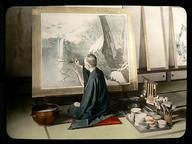Quiz Answer Key and Fun Facts
1. The term 'ready-made' is most often associated with French Dada artist Marcel Duchamp, who developed this sometimes bizarre and hilarious new artform. Which of the following items did not become one of Duchamp's famous ready-mades?
2. Which 'R' art term is used, in a broad sense, to imply artwork which faithfully strives to depict things as they naturally appear, and in a specific sense to a mid-19th century French art movement led by Gustave Courbet?
3. This was an art movement that flourished in the United States in the 1930s, and had its advocates in Thomas Hart Benton, Grant Wood and John Curry. What was it called?
4. 'Relief' (or 'rilevare', in Italian) refers to sculpture that projects out from a flat surface, such as a wall or door. Which of these terms refers to the lowest form of relief'?
5. Now I will provide you with some 'relief', namely an easier question. The word 'Renaissance' can be best translated into English as which of these?
6. What is the French language term that describes something, perhaps a tree, that is placed in the foreground and to the side of a painting for the purpose of giving depth to the work?
7. The 'R' terms 'retable' and 'reredos' relate to which church-related item?
8. Which of these is a drinking vessel shaped like a horn and used during ancient times, the end of which frequently took on zoomorphic forms?
9. Watteau, Boucher and Fragonard were three key French practioners of the Rococo style. Which of the following is an Italian artist also associated with the Rococo movement?
10. This 'R' architectural term is used to describe either a round building, typically covered by a dome, or a large round room. To which 'R' art term do I refer?
Source: Author
thejazzkickazz
This quiz was reviewed by our editing team before going online.
Any errors found in FunTrivia content are routinely corrected through our feedback system.

